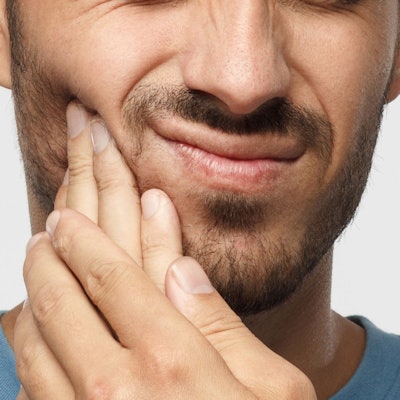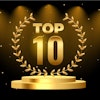
The COVID-19 pandemic has led to an increase in the number of patients seeking treatment for new orofacial pain complaints and related symptoms, according to a study in the Journal of the American Dental Association. The most common symptoms that providers felt were aggravated in these patients included anxiety, headache, bruxism, pain while chewing, and sleep disturbances.
Researchers analyzed voluntary and anonymous online survey data regarding orofacial pain and perceptions of patients' symptoms. Practitioners who participated in the survey took part in a webinar from the American Academy of Orofacial Pain on orofacial pain, headaches, and sleep care during the COVID-19 pandemic.
"With increased stress, disrupted sleep, economic uncertainty, changes in social functioning, increased fear of contagion, and loss of loved ones, the impact of the COVID-19 pandemic on people's life has been ubiquitous and unforgiving," wrote the authors, led by Dr. Fernanda Yanez Regonesi of the division of orofacial pain at the University of Kentucky College of Dentistry (JADA, April 24, 2022). "Emerging evidence is suggesting that patients with chronic orofacial pain are being particularly negatively impacted."
It's no secret that the COVID-19 pandemic has impacted people's lives. People with chronic pain are among those particularly impacted, but few have examined how the pandemic has affected the care and presentation of orofacial pain, something the report sought to better understand.
That subject was the topic of a webinar and panel discussion for orofacial pain practitioners held in January 2021. A survey regarding orofacial pain during the pandemic was sent to 617 American Academy of Orofacial Pain members. Of that number, 111 practitioners completed the survey online.
Survey participants answered questions about their orofacial pain practices and perceptions of their patients' symptoms. Among those who responded, 47 were practitioners in an orofacial pain specialty practice, 26 were general dentists with orofacial pain training, and 22 were from an academic institution.
Respondents reported a marked increase in new orofacial pain patients. The most common symptoms patients presented with were masticatory muscle myalgia, anxiety, tension-type headaches, bruxism, and insomnia or fragmented sleep.
Providers said the onset in symptoms was often tied to the COVID-19 pandemic. In addition, 1 in 3 providers reported the pandemic was often or extremely related to their patient's symptoms, and nearly 40% said the pandemic was somewhat related.
General dentists with orofacial pain training more often noted an increase in temporomandibular joint disorders compared to orofacial specialty practice providers and providers in academic settings, while specialty providers reported greater increases in muscle spasms. Further, general dentist practitioners noted an increase in anxiety among patients versus providers in the other two settings.
"The pandemic is not only directly contributing to increased symptoms in patients with orofacial pain but may also be influencing how well they are able to access care," wrote the authors of the report. "While COVID-19-related changes have been well-documented in certain medical services and chronic pain settings, few papers have examined how the pandemic has impacted the care or clinical presentation of chronic orofacial pain patients specifically."
The study was not without its shortcomings. It did not have a randomized group of practitioners and did not address the origin of patients' pain. In addition, it did not specify between new pain or worsening pain.
However, the results add to growing evidence that people are reporting more bruxism and orofacial pain during the COVID-19 pandemic than before. Providers across all practice settings are likely to see more patients with orofacial pain symptoms that affect their mental health, functional status, and sleep quality.
"The COVID-19 pandemic has resulted in an increase in the number of patients seeking consultation for orofacial pain complaints, especially due to masticatory myogenous pain" the authors wrote. "Among the symptoms reported by the patients, orofacial pain practitioners have reported an increase in psychological burden along with aggravation of associated parafunctional activities and disruption in sleep."



















